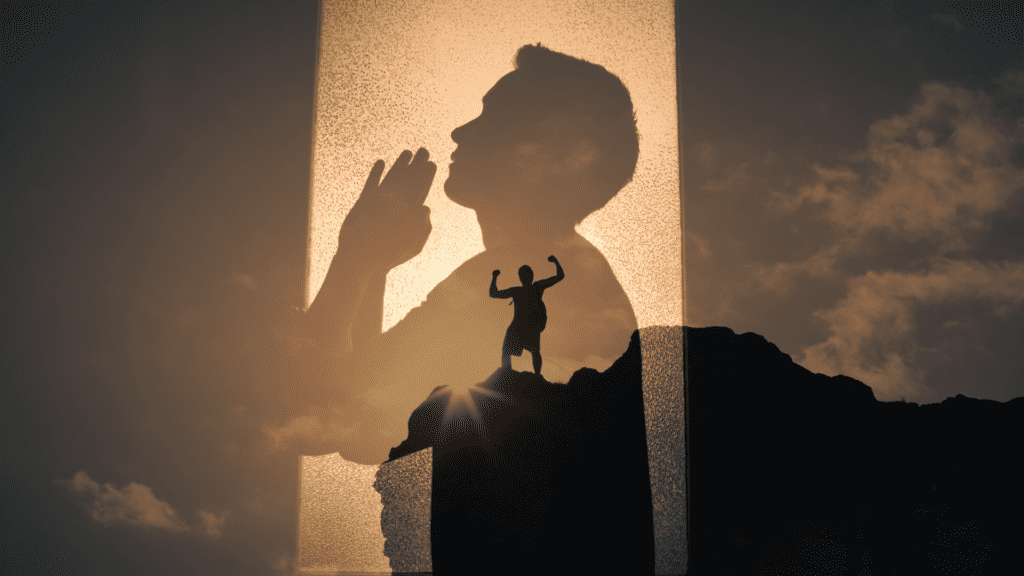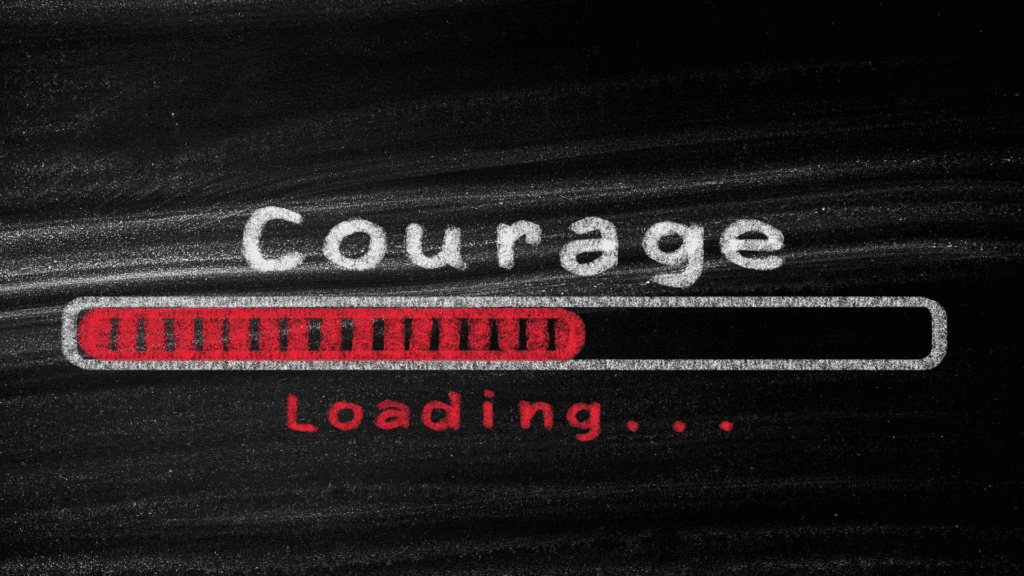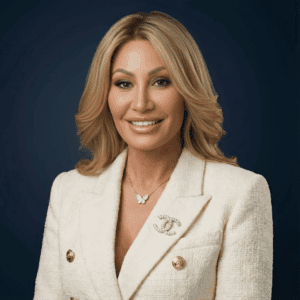An Everyday Virtue, Not Just Reserved for Heroes
What is courage? In my journey through life, I’ve come to realize that courage is not just a virtue reserved for heroes in epic tales or soldiers on the battlefield. It’s a quality that each of us can cultivate and apply to our everyday lives. As I delve into this intriguing concept, I’m struck by its power to transform not just individuals, but entire societies.
My own path to understanding valor began in the depths of personal tragedy. After losing both my parents, I found myself face-to-face with overwhelming fear and uncertainty. The world seemed to have lost its color, and the future felt impossibly daunting. It was during this dark period that I truly grasped the nature of fear and the vital importance of boldness.
Through my struggle to find meaning and purpose in the wake of loss, I discovered the transformative power of neuroscience. This revelation not only helped me navigate my own grief but also sparked a passion for helping others overcome their fears and cultivate grit in their lives.
As a neuroscientist and coach, I’ve witnessed countless individuals confront their deepest fears and emerge stronger. From executives facing tough decisions to individuals battling anxiety and depression, I’ve seen firsthand how understanding the brain’s response to fear can be the first step towards building true mettle.
My experiences have taught me that gallantry isn’t about the absence of fear, but about moving forward despite it. It’s a skill that can be developed, a muscle that can be strengthened. And as we cultivate daring in our own lives, we have the power to inspire those around us, creating a ripple effect that can transform communities and societies.

The Essence of Courage
When we think about this word, images of grand, heroic gestures often come to mind. However, I’ve learned that true bravery often manifests in smaller, more subtle ways.
Traditionally, fearlessness has been divided into two specific types:
- Moral: The ability to act according to one’s conscience, even in the face of social disapproval or potential scandal.
- Physical: The willingness to risk bodily harm or death, often associated with soldiers and first responders.
But as I’ve reflected on this distinction, I’ve come to see that at its core, it is about one fundamental thing: taking risks and enduring danger, regardless of the form it takes.
The Neuroscience Behind Courage
As I’ve delved deeper into this concept, I’ve discovered that it’s not just an abstract virtue, but a tangible neurological process. Understanding the science behind this trait can help us cultivate it more effectively in our daily lives.
At its core, bravery is closely connected to our brain’s response to fear. The amygdala, a small region in our brain, controls our fight, flight, or freeze response to danger. When it senses a threat, it releases stress hormones, signaling to our body that danger is near.
My Research Into This Elusive Skill
Recent groundbreaking research, which I conducted in collaboration with my esteemed colleague and friend, Dr. Andrew Huberman, has unveiled what we’ve come to call the “courage switch” in the brain. Our joint study identified two adjacent clusters of nerve cells that play pivotal roles in determining our response to threats. These neural clusters effectively act as a switch, influencing whether we react with timidity or boldness when faced with challenging situations. This discovery has profound implications for how this trait actually manifests in the brain.
Building Fortitude Through Neuroscience
Understanding these neurological processes can help us develop strategies to build courage. For instance, practices that help regulate our amygdala response, like mindfulness meditation, can potentially help us manage fear more effectively. Similarly, techniques that engage our prefrontal cortex can help us override our initial fear response and act courageously.
Real-Life Examples of Courage
Two years ago, I worked with a client, Josh, who was struggling with debilitating fear when leading his team. Through our sessions, we used neuroscientific approaches to help him overcome this fear. The transformation was remarkable – from a hesitant, anxious leader to a confident and inspiring one .
Recently, I worked with a young woman, Christina, who was facing intense pressure from her parents to marry someone of their choosing. Through our work together, we focused on building her emotional resilience. Gradually, Christina developed the grit to have an honest conversation with her family about her desire to choose her own partner.

Overcoming Fear: The Key to Unlocking Heroism
Fear is the nemesis of courage, but it’s also what makes bravery and everyday heroism possible. In my experience, the key to cultivating this personality trait, lies not in eliminating fear, but in learning to move through it, and then past it.
Probing Our Fears
One effective strategy I’ve discovered is to examine our fears closely. By shining the light of reason on our anxieties, we often find that they’re less threatening than they initially appear. This approach allows us to dissect our fears, understanding their origins and the beliefs that fuel them. Through this process, we can challenge irrational thoughts and replace them with more balanced perspectives. Moreover, by facing our fears head-on, we build resilience and develop a greater sense of self-efficacy, empowering us to tackle future challenges with increased confidence.
Building Bravery: The Power of Small Steps and Precision
In cultivating fortitude, I’ve discovered the profound impact of small, manageable actions and precise fear analysis. Each act of valor, no matter how seemingly insignificant, strengthens our resilience and boldness. As Florence Nightingale wisely noted, even the most transformative journeys often begin with a single, determined step.
Embracing this approach allows us to gradually expand our comfort zones, much like building physical strength through consistent, manageable challenges. These small acts of bravery compound over time, bolstering our confidence and enabling us to face larger obstacles with greater poise.
Simultaneously, I’ve found that vagueness amplifies fear, while defining and delimiting our fears gives us a sense of control. This “fear-setting” process involves breaking down our fears into concrete, manageable components. By doing so, we can develop targeted strategies, turning overwhelming obstacles into surmountable tasks and distinguishing between realistic concerns and unfounded worries.
Remember, the goal isn’t to eliminate fear entirely, but to develop the grit to act despite it. By focusing on small, achievable acts of bravery and precise fear analysis, we lay the foundation for a more resilient and audacious approach to life’s challenges.

The Multifaceted Nature of Courage
The Compounding Effect of Courageous Acts
What is the true meaning of courage? Just as compound interest grows wealth over time, I’ve observed that small acts of valor compound to create significant change in our lives. Each brave decision strengthens our resolve and makes the next bold act a little easier. This cumulative effect can transform our character, gradually building a foundation of resilience and fortitude. Over time, what once seemed daunting becomes manageable, and we find ourselves capable of facing increasingly challenging situations with composure and determination.
The Selfless Nature of True Courage
As I’ve studied paradigms of courage throughout history, I’ve come to appreciate that the most profound acts of bravery are often selfless in nature. These acts transcend personal gain, focusing instead on the greater good. Such selflessness not only impacts those directly involved but also inspires others, creating a ripple effect of positive change in communities and societies.
Heroism: Courage in Service of Others
True heroism, I believe, involves making sacrifices for the benefit of others. It’s about being a team player and contributing to something greater than ourselves. This form of courage often requires us to set aside our own comfort, safety, or personal interests for the sake of others. It’s the firefighter rushing into a burning building, the whistleblower exposing corruption at personal risk, or the everyday person standing up against injustice.
The Quiet Heroes Among Us
While we often celebrate the most visible acts of courage, I’ve learned to appreciate the quiet heroes who make sacrifices behind the scenes. These individuals remind us that courage doesn’t always seek the spotlight. Their actions, though often unnoticed, are crucial in maintaining the fabric of our society. From caregivers tirelessly supporting loved ones to volunteers dedicating their time to worthy causes, these unsung heroes embody courage in its purest form.Cultivating Courage in Everyday LifeThrough my research and personal experiences, I’ve developed several strategies for fostering courage in daily life. These include practicing mindfulness to manage fear responses, setting small, achievable goals to build confidence, and regularly stepping out of our comfort zones. By incorporating these practices into our daily routines, we can gradually build our capacity for courage, enabling us to face life’s challenges with greater resilience and determination.
The Path to Fearlessness
As I reflect on the nature of this concept, I’m reminded that bravery is not a destination but a journey. It’s a continuous process of growth, self-discovery, and pushing beyond our perceived limitations.
Courage is indeed calling, and it’s up to each of us to answer that call. Whether it’s standing up for our beliefs, pursuing our dreams, or simply facing the challenges of everyday life with resilience and determination, courage is the key that unlocks our full potential.
#CourageIsCalling #EmbraceBravery #OvercomeFear #EverydayCourage #ResilienceBuilding #Courage




